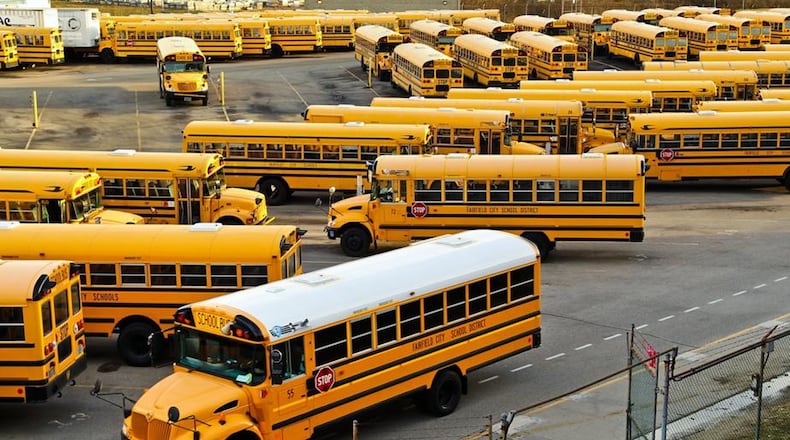Until the late 1990s and early 2000s, most area school districts operated their own school bus fleets to transport students to and from schools.
But regional and national companies began soliciting area school districts, pitching privatization as the cheaper, more efficient way to go.
Recently a spotlight was cast on school busing when Lakota Schools faced a near-strike by bus drivers displeased with the contracted bus supplier Petermann Transportation.
Lakota’s privately contracted bus fleet transports on an average school day 13,000 students on 165 routes covering more than 10,000 miles.
Lakota, which has the largest enrollment in Butler County, has contracted out busing since 2005, and school officials cite cost savings through lower bus operations costs and other related expenses.
“One of the big advantages was the ability to become self-insured for workers compensation in lieu of paying the high premiums. From my understanding, that saved the district about $1 million per year,” said Chris Passarge, chief operations officer for the 16,500-student district.
Pasarge said the district studied whether to re-institute its own busing in 2010 while going through a contract process. The district eliminated high school busing in 2011.
He said the district learned it could save in costs for the buses themselves as well as staff needed to support a fleet of drivers by keeping those service outsourced.
But while the smaller Middletown schools, which buses 3,650 students and covers 4,274 miles each school day, also joins Lakota in contracting with Petermann bus services, some other districts are still going the traditional, home-operation route.
Two of the county’s largest school systems, Fairfield and Hamilton, contend their own operations work best for their school systems. Bill Westerbeck, transportation director for the 10,000-student Fairfield Schools, said the district has never contracted out busing services.
“In our case, it’s less expensive to operate our own bus fleet. And we hire our own drivers,” he said, citing one of the reasons why some other local districts also keep busing in-house.
Robert Hancock, treasurer of the 10,000-student Hamilton schools, said “the advantage of a district-operated transportation system is complete control over daily operations. One of the reasons that school districts contract out transportation is an aged bus fleet.”
The average cost of a new school bus ranges from $65,000 to $85,000.
“In Hamilton, we have purchased buses on a yearly basis in order to maintain our fleet. Districts with an aged fleet can find contracting out transportation an attractive option to solving this problem,” Hancock said.
But he added that “the advantage is also the disadvantage.”
“We are educators, any time and effort by upper management devoted to transportation takes away from time we should be spending on managing the educational process and improving student achievement,” said Hancock.
School parents and students shouldn’t be concerned by the prospect of varying safety measures between privately contracted buses and those own and operated by school districts, Westerbeck said.
“We are all held to the same safety standards by the state. The way I’ve always looked at it is I approach it as if my own kids could be on any of our buses,” he said.
About the Author
